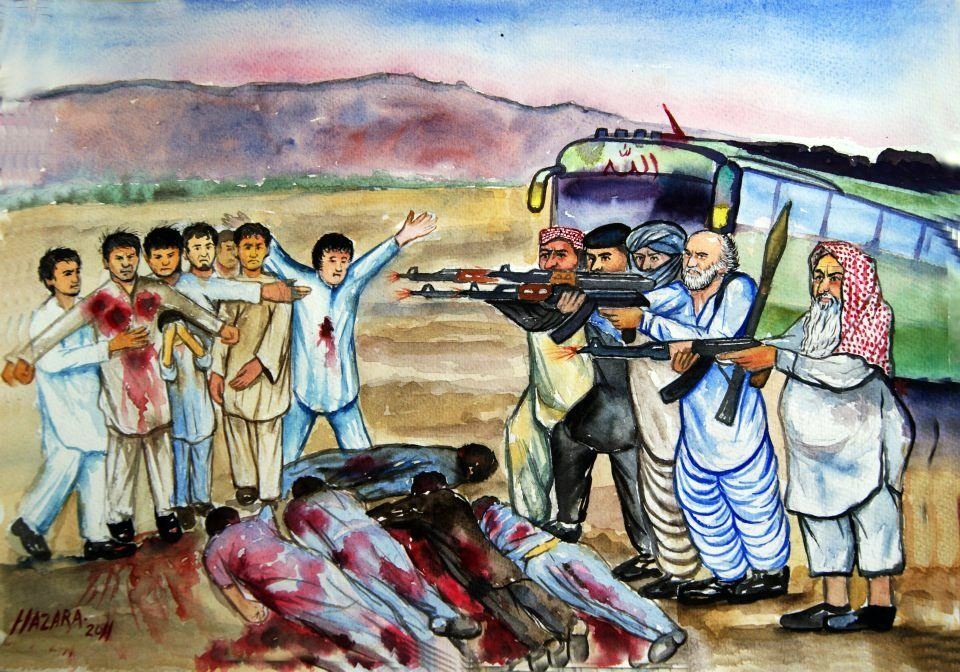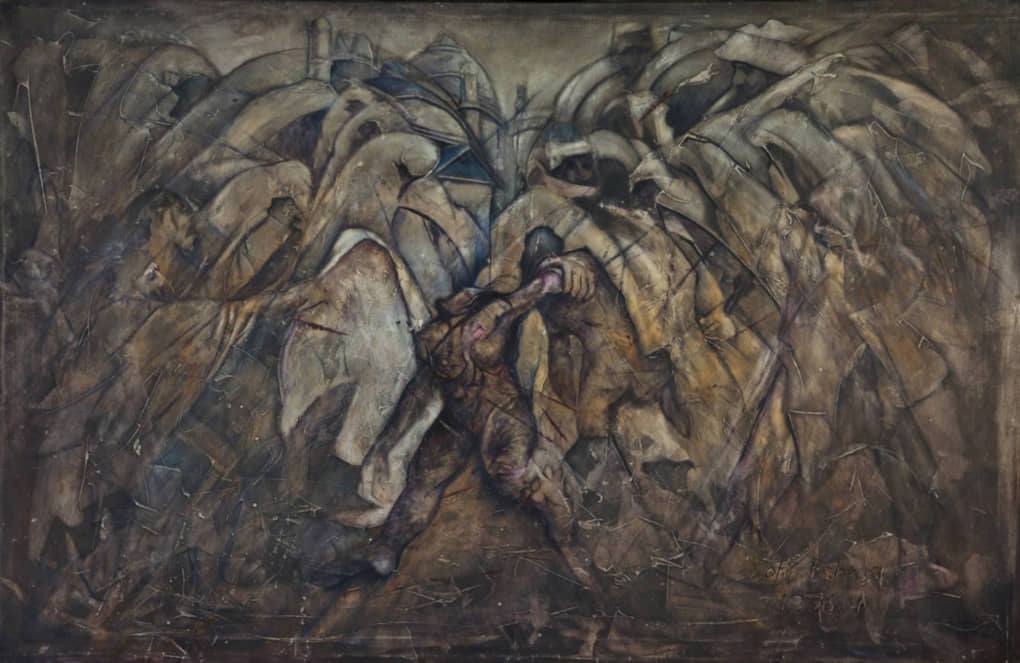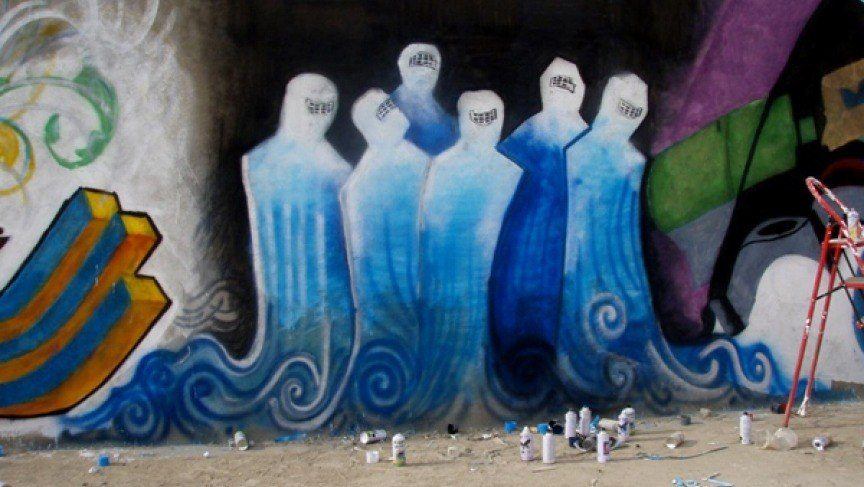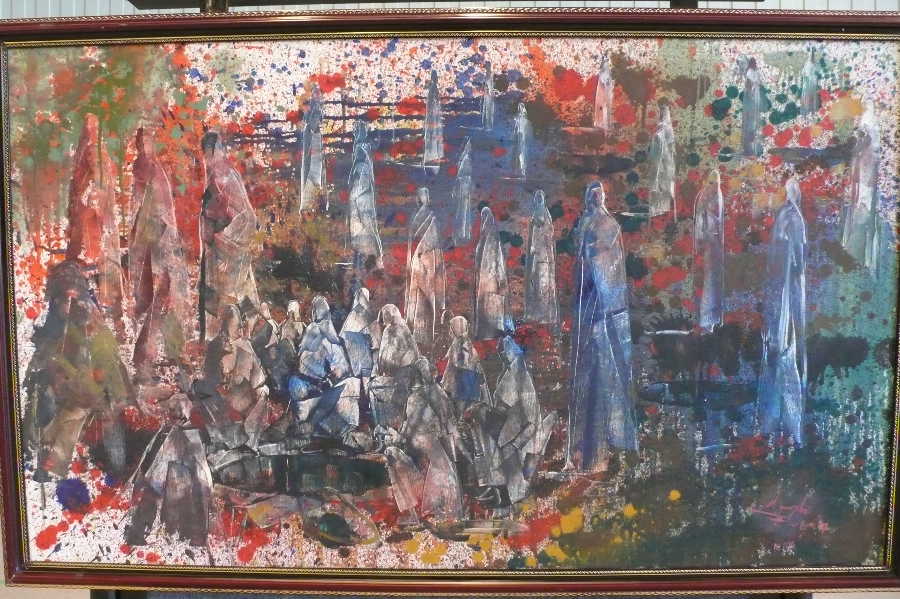Early in 2021, Afghanistan once again found itself in a situation similar to the early 1990s, when the Soviet Army withdrew from the country. The then president, a technocrat educated in the Soviet Union, was head of the government in the communist system, installed by the USSR. Poverty, war and violence were widespread. The opposing forces wanted to establish an Islamic system.
The result was an end of support from the Soviet Union, overthrow of the communist government by the mujahideen (the Arabic term for those carrying out jihad; the term also means “strugglers”), civil war between different ethnic groups of mujahedeen, and later the Taliban regime’s takeover of the country and their hosting of Al-Qaeda, which planned the 9/11 attacks from inside Afghanistan – which made the international community and the US intervene in Afghanistan. The Taliban regime was toppled.
There were significant changes in the ensuing 20 years, particularly valuable achievements were made in the cities. But despite all the achievements, Afghanistan remained a poor, violent, corrupt, and one of the worst countries for women, children, and religious and ethnic minorities. As in the 1990s, at the start of 2021, the Afghan president was a technocrat – but this time educated in the US and president of a government backed by the US and the liberal West. The opposing forces, however, were still the same, claiming that they wanted to establish a pure Islamic emirate, in which they would apply their Islamic Sharia.
After the withdrawal of the Soviet Army from Afghanistan in 1989, the Afghan government fell under the mujahideen. There was a bloody civil war in the country, and finally the Taliban took power. Between the years 1996-2001, the Taliban carried out massacres against ethnic and religious minorities, such as, the massacres of the Hazaras in Mazar-e Sharif and Bamyan provinces. As part of the application of their Islamic Sharia, the Taliban flogged and stoned hundreds of women publicly, punished thousands of people for simple things, such as, shaving the beard, having a “western” hair style, having books in foreign languages, listening to music or watching films. As part of their foreign policy, they established close ties with Islamic fundamentalist states such as Saudi Arabia, United Arab Emirates, Pakistan (the only three states that recognized the Taliban) and some other Arab states.
Moreover, the Taliban provided shelter to Al-Qaeda, the most dangerous terrorist organization of the time, which planned the 9/11 attacks. After the terrorist attacks of 9/11, the United States used its right to Self-defense, a right ensured to States by article 51 of the UN Charter. At the same time, the United States requested its allies to join the war on terror and use their right to “collective defense” given by the same article of the UN Charter. As a result, NATO countries for the first time invoked their article 5, which provides that an “armed attack against one NATO member is an attack against all members and so they will take actions to assist their Ally.” That was how the war against terrorism in Afghanistan started. Primarily, the military camps of Al-Qaeda and Taliban were destroyed and then the Taliban regime was ousted from power.
After the Taliban was toppled, the US also got engaged in nation-building in Afghanistan. The Bonn Conference was held in Germany, which paved the way for an interim government to be formed by representatives of different ethnic and religious groups in an inclusive manner. The interim government, as part of its duties, held a loya jirga (traditional grand council) to make a new constitution, which was ratified in 2004, and in theory, guaranteed some freedom, as long as said freedom did not contravene any religious teaching of Islam. Although some form of religious freedom could be inferenced from the constitution, Islam was established as the official religion of the state.
The main issue with the new constitution was that, as in the last century, it centralizes the power to the center, something that alienates different peoples, as they cannot even select their province and district governors. However, one of the most important thing about the new constitution is that, in theory, it allowed women and girls to enter schools and universities, and the social and political arena.
State institutions were built from scratch. Universities and schools were opened for both women and men, although in many provinces women could never attend schools and universities in large number. Operations against terrorism were carried out, along with development projects in many parts of the country; and despite widespread corruption in the Afghan government a lot of progress was made in communication, media and many other areas. All that progress came at a huge human and financial cost, both for the international Community and for the people of Afghanistan.
Despite all the hard-won achievements and changes, many things did not go well. And so on August 15, 2021, Afghanistan fell and a serious human tragedy began. To understand why things ended the disastrous way they did, there is a need to carefully delve into the past. One of the reasons why things did not go well was because the US, NATO and the Afghan government did not pay attention to how the Taliban transformed itself over time. Thus, the US and NATO always had a static, monolithic understanding of the Taliban, while the Taliban and its strategy kept evolving.
The Greek historian Thucydides explained that war was waged for three reasons: honor, fear and interest. In the case of Afghanistan, many argued it was honor (in both religious and tribal context) for which the Taliban continued to wage war, after they were toppled by a US-led coalition in 2001.
Others argued that the irrational Taliban continued the war simply because they were manipulated by a charismatic leader (Mullah Omar), were indoctrinated in religious madrasas, were closely tied to the Pashtunwali culture that valued avenging dead relatives and blood vengeance. However, these arguments were only partly true. While culture had a significant role in shaping the Taliban’s way of war, the group and its war were explicable within familiar strategic concepts both classical and more contemporary. The Taliban had developed a strategy to succeed and ultimately became winners.
Afghans are more generally survivalists. In that sense, the Taliban, formed primarily by Pashtuns, are no different than the rest of the people. Despite the fact that religiously the Taliban believe in the other world and praise martyrdom, in the battle ground, their top priority is not directly going to paradise, but to survive and succeed. The same survivalist nature is the key to explaining why, in the conflict areas, people change sides, always siding with the expected winner, or playing both to avoid recrimination by the possible top-dog.
In 2001, the Taliban was toppled by the US-led coalition in the course of just a few weeks and by 2006 many American and NATO authorities counted the Taliban as ultimately defeated. However, some historians and military analysts were skeptical of the narrative that said the Taliban were dead. Some years later, the skeptics were proven right. The Taliban, who were pronounced dead several times, refused to die, and went through a process of transforming into the “neo-Taliban” – they gradually adapted to changes that could help them reach their strategic objective of becoming the winner.
Thus, after being toppled, the Taliban gradually emerged and secretly started spreading their handwritten messages in the form of “night letters,” face-to-face warnings, and in some cases, radio broadcasts, emphasizing the narrative that time was on their side and the infidels would have to leave. The Taliban leader Mullah Omar had said, “…the Americans and NATO have all the watches, but we [the Taliban] have all the time…”
As the Taliban positions were being bombed since 2001, they exploited territorial bases in Pakistan to survive, and replenished their manpower with fresh recruits of stateless, transnational jihadists with expertise, money, and weapons, but also with Pashtun, Arab, Uzbek, Chechen and other volunteers. Then the Taliban carried out periodic offensives, mobilized Afghan riots among civilians alienated from the state because of food shortage and the state’s great corruption and failure.
While in power, the Taliban practiced and imposed strict Sharia and “pure” Islam. On the battlefields, the Taliban started to sacrifice their culturally and religiously-rooted beliefs and taboos for survival and success. For example, despite the religious and cultural emphasis on human remains to be buried, the Taliban fighters usually left the bodies of their dead behind and did not risk removing them from the battleground. The “neo-Taliban” resorted to Al Qaeda-style tactics – roadside explosives, kidnappings. That was well-calculated – because the international and Afghan forces were not affected as much by five days of fighting as much as they were affected, for example, by a suicide attack or a roadside bomb.
The Taliban are mainly formed by Pashtuns, but as part of their evolving policy to gain popularity, the group tried to include the rival groups such as Tajiks and Uzbeks in their movement. They were very successful in that. For instance, provinces such as Badakhshan, Takhar, and Kundoz, which are Tajik and Uzbek dominated respectively, fell to the Taliban very easily this year. It was partly because the Tajik and Uzbek locals were divided and many became vulnerable to Taliban ideology.
The Taliban even tried to recruit Hazaras —a group different from the Taliban ethnically, linguistically, and religiously— but were unsuccessful simply because Hazaras remember the Taliban’s ethnic cleansing and massacring of thousands of Hazaras in Mazar-e Sharif and Bamyan and thus still fear their return.
While in power, the Taliban were known for technophobia. The Taliban’s Sharia police were breaking devices such as television and computers. But in the recent years, the “neo-Taliban” have vastly been using every means of technology to spread their propaganda. By 2006, the Taliban had representatives in Iraq to learn video production from Al-Qaeda, so that they could use produce videos and publish them on the internet.
Considering the fact that the Taliban considered depiction of humans as evil, the use of new technology was revolutionary. Similarly, when in power, the Taliban punished people for listening to music; but in the last few years the group has used music with religious content as a way to spread their propaganda, strengthen the morale of their fighters and deliver their message in the most suitable way to the illiterate people. Like modern fascism, the Taliban hates modernity, but wants the benefits of its technology.
The coalition and the Afghan government destroyed opium fields, but the Taliban offered protection and defense of the opium fields, which made the group more attractive to the Pashtun locals in the southern provinces of Helmand and Kandahar, in which the largest percentage of the world’s opium is produced. The Taliban’s protection of the opium fields and its direct involvement in the drug industry, although in opposition to their religious beliefs and their leader Mullah Omar’s fatwa in 2001 to ban poppy cultivation, was strategically calculated, and provided the Taliban with an annual income of around $420 million.
The Taliban also used the time during which the US was engaged in Iraq and allocated much of its manpower, spending and political capital to the war in that country, and during which time, Afghanistan was not the priority. For example, in 2007 there were 27000 American troops in Afghanistan, while in Iraq the number was around 155000. This neglect helped the Taliban to strengthen even more.
As part of their evolving policy to gain popularity, they relaxed their restrictions on social behavior. For instance, while in power and even many years later, the Taliban only allowed religious schools for boys and totally forbade girls’ education. Between 2001-2006, the Taliban destroyed over 200 schools, killing tens of students and teachers. Years later, they allowed schools for boys in their territory; but this never meant the Taliban were ultimately sincere or committed in the long term to change their education policy.
Another stereotype which is mainly promoted by the Taliban themselves is that the Taliban are very much tied to martyrdom and going to paradise, which is true, but at the same time, while in wartime, the Taliban have proved to be more subtle operators. There is a famous case in which Taliban leaders trimmed their beards —shaving the beard was punished under the Taliban— to avoid being captured.
Innovation of suicide bombers, an affront to popular understanding of Islam in Afghanistan, came with a utilitarian justification by the Taliban leaders; meaning that as it was proved effective, so it was allowed and justified by their version of Islam. A suicide bomber’s dream might have been paradise, but to a Taliban leader that was an important way to reach their objective.
The Taliban sacrificed dogma for popularity. They sacrificed religious belief for success. They shifted from technophobia to using technology and cyberspace to spread their message and propaganda. They sacrificed the Pashtunwali code, for example, to attack pro-government Pashtuns, again for their ultimate success. The Taliban gradually formed a parallel government and virtual state aiming to become the real government and state over time.
Part of the Taliban success was because of the willingness of the Western media to broadcast the Taliban claims. The Taliban have always used human shields, occupied small towns to maximize collateral civilian deaths caused by Afghan and international forces, and blamed everything on the government and NATO. All their claims were broadcast by the Western media. The Taliban were particularly good at exploiting audience perceptions of the media. For instance, the Taliban removed weapons from the corpses of their dead fighters and made them appear as non-combatant and then showed the bodies to the media.
Some argued the Taliban’s center of gravity was their leader, but they were proved wrong. Because when their leader died, the Taliban could successfully keep it secret for months and finally overcome the leadership issue. In recent years, the Afghan government tried to create divisions among the Taliban by supplying and creating smaller factions,; but that only empowered the Taliban and endangered the Afghan government. As one Taliban faction leader described it once: “…we don’t depend on government, the government depends on us. They think they use us, but no, it is we who are using them and their equipment to advance our own goals…”
What was interesting about the Taliban factions receiving supply from the government is the significant change in their view of the issues. In their propaganda, the Taliban always refer to the Afghan government as “the puppet of the West,” and to those working for the government as “slaves of the slave;” while in wartime, the Taliban received support from the Afghan government without any hesitation, but then cleverly used it against the Afghan government.
While it is not clear how much the Afghan government and its intelligence services have infiltrated the Taliban, it is crystal clear that the Taliban had many sympathizers and infiltrators in the Afghan National Army, Afghan National Police; but probably not on a serious scale in the Afghan National Directorate of Security.
In early 2021, the Taliban had around 80,000 full-time fighters and had significant income sources, such as, illegal mining and opium money. In the peace deal with the US, in February 2020, the Taliban guaranteed the freedom of their prisoners —many of them accused of committing serious crimes.
A great many of the reasons why Afghanistan fell so rapidly are related to the Afghans and many of them date back to 2014 when Ashraf Ghani became president, after a fraudulent election, in which he was announced the winner, while his rival, Abdullah, who did not compromise, became Chief Executive Officer, after mediation by the US Secretary of State, John Kerry.
During his time as president, Ghani alienated other groups, by depriving them of any real role in decision-making, and surrounded himself exclusively with Pashtuns. In the multi-ethnic Afghan society, monopolizing power has always been one of the main issues why the nation-building process fails and the governments collapse.
In his election campaign, Ghani promised that he would eradicate corruption. But when in power, he failed to address the issue. Ghost schools and ghost soldiers, for which Afghan authorities were paid, were just a small part of the endemic corruption in the country.
What further demoralized people about the democratic system was the moral corruption of those in power, including the people very close to Ghani. The scale and the level of corruption was incalculable. Even widows of Afghan soldiers had to sexually gratify officers to get pensions; and there were allegations that members of the Afghan administration offered posts in exchange for sexual favors.
There has always been ethnic division and ethnic tension among different groups in Afghanistan. Larger groups usually gained power, with the help of external sources, and in some cases committed atrocities and victimized smaller groups – and they have never been held accountable for what they did, which goes in explaining why there has been so much hatred and so little trust. However, after the new constitution was ratified in 2004, there was hope that a nation would be built from the different ethnic groups.
But people have remained divided, up to the point that even at schools and universities, students of different ethnicities have made ingroups, so that even inside the classrooms the interaction was mainly by way of groups.
If anything ever was national, in the real sense of the term, in the last two decades and probably in the last century, that was the Afghan National Army. For the most part, it was because it was largely trained by the US-led NATO forces, in which ethnic composition, as primarily set by the US, was inclusive, in which all ethnic groups could see themselves as belonging. In the Afghan National Army, soldiers developed profound friendships, bonds, trust and loyalty. Even though while the whole country and institutions were drowning in corruption, the national army maintained some positive motivation, and even gradually gained the trust and respect of ordinary people.
Nevertheless, since 2014, when Ashraf Ghani became the president, the Afghan National Army gradually became an instrument in the hand of the populist president who was accused of ensuring Pashtun domination, even if it came at the cost of ethnic and social division of the country, or strengthened the terrorist group, the Taliban. Since 2014, non-Pashtun generals and officers have continuously been fired or sent to the frontline and killed. Politicizing the Afghan National and Defense Security Forces further weakened it.
Late in 2016, Ghani and, as sarcastically described by some, his “three-man republic” started a campaign to engage the Taliban in peace talks. This campaign, in which apparently millions were spent to spread the idea that the Taliban had changed and it was time to negotiate with them, was flawed. The campaign was not launched after a military gain over the Taliban; but rather it begged and bribed the Taliban to start peace talks. As part of the campaign, in 2018, Ghani offered a careless ceasefire to the Taliban. This miscalculated ceasefire paved the way for the military presence of the Taliban in major cities, including the capital, Kabul, which the Taliban had never left. The Taliban’s presence in the cities gave them the opportunity to campaign for their group by exploiting the mullahs who already sympathized with them.
The idea that Afghanistan did not have a military solution also became attractive in the US. “Peace entrepreneurs” like Khalilzad, who was later appointed as the US Especial Envoy to Afghanistan, took advantage of that idea. Khalilzad emphasized that there was no “military solution” and took the lead mediating peace negotiations on behalf of the US with the Taliban.
Regardless of how much the US authorities lied to the American public about the war in Afghanistan and what had been achieved, Khalilzad’s efforts to make peace or find a way out for the US from Afghanistan were deceitful and irresponsible. His negotiations with the Taliban did not end in peace, led to the emboldening and strengthening of the terrorist group which the US fought for its harboring of Al-Qaeda in Afghanistan. While the Taliban has never denounced its cooperation or ties with Al-Qaeda, Khalilzad kept assuring everyone that the Taliban had changed and was sincere in its talks, and that the group could become a partner of the US, in fighting terrorism in Afghanistan and the region.
While Khalilzad was selling the idea of a “changed Taliban” and that political settlement was possible, the UN reported that the Taliban continuously violated the conditions of the peace deal signed on 29 February 2020, which included a ceasefire, reduction in violence, and engagement in peace talks with the Afghan government. The report indicated that the Taliban, in fact, had increased their attacks, violence and target killings. Most of the five thousand Taliban prisoners, who were released from Afghan government prisons, rejoined the war.
In addition, the Taliban continued applying their Sharia in the territories under their control. Considering all that, it was foreseeable that the withdrawal of the United States and NATO forces would have serious consequences for Afghanistan, particularly for women, and ethnic and religious minority groups.
At the same time. according to the study “Women, Peace and Security Index 2019/20” carried out by Georgetown University, in cooperation with Peace Research Institute Oslo (PRIO), Yemen and Afghanistan were the worst countries for women among 167 countries that were studied. Such was the situation when the international forces were – still – in Afghanistan, supporting the Afghan government and the Afghan Army. None of this was taken into account by Khalilzad, who was searching for a way out and very soon.
In effect, Khlilzad was negotiating with his eyes closed. For instance, according to different reports, since last year, the political elite and civil society activists, journalists, and in some cases university professors and intellectuals with clear points of view against the Taliban ideology, fell victim to Taliban targeted killings —which were unclaimed or denied but probably in most cases carried out by the Taliban.
There were various other disturbing signs. Young Taliban sympathizers spoke of a “great revenge” on those who in one way or another were against the Taliban ideology. What that indicated was that the Taliban would have no respect for any commitment they made with the United States, or whatever they said in front of the cameras of the international media. The group was deceiving the whole international community and buying more time. That is why, as soon as the foreign forces left, the Taliban continued to take control of the country by force.
In February 2020, the US and the Taliban signed an Agreement in the Qatari capital of Doha, but with the absence of the Afghan government. Based on this agreement, the Taliban was to stop its offensives against the US and NATO forces; end its ties with Al-Qaeda; not allow Afghanistan’s soil to be used by other transnational terrorist groups to attack the US and its allies; reduce violence and begin intra-Afghan peace dialogue. On the other side, the US would withdraw forces from Afghanistan and guarantee the release of 5000 Taliban fighters.
Months after the agreement was signed, 5000 Taliban prisoners were released, most of whom were reported to have rejoined the Taliban in their Jihad. The Taliban indeed remained committed to not attacking the US and NATO forces after the agreement; but its relation with al-Qaeda continued to exist and even strengthened, and its offensives against the Afghan forces also increased.
In April 2021, US president Biden announced the end of the “forever war” in Afghanistan and the total withdrawal of US troops from the war-torn country. Despite some NATO members, for example, Germany’s approval on extending its military mission in Afghanistan for one more year, the US withdrawal plan consequently led to the withdrawal decision of all NATO forces from Afghanistan. While the date set for the total withdrawal was 11 September, most NATO members had already brought their troops home by early July.
Since the announcement of the withdrawal, violence has surged, peace talks between the Taliban and the Afghan government did not have any result, and the Taliban continued to rapidly overrun a significant number of districts. In June alone, Afghan government forces lost more than 700 military vehicles and other equipment —of course donated to the Afghan army by the US— to the Taliban. The continuous loss of territory and military equipment gave the Taliban fighters’ momentum, and impacted negatively on the Afghan security forces, who no longer had air support from the US forces.
By ending its military presence, the US not only lost its most significant leverage with the Taliban, but also emboldened the group to claim victory by means of jihad. What the international community and the US must take note of is that a Taliban victory in Afghanistan sends a strong signal to other Islamist jihadists in other parts of the world that they too can become winners. Most importantly, the US and the international community should realize that what happens in Afghanistan does not stay in Afghanistan. When terrorism takes stronger roots in Afghanistan, it will pose a threat to the rest of the world.
Now the situation seems pretty similar to when the United States left Iraq, and when ISIS gained strength and started massacring Yazidis and other minorities. The U.S. went back and took part in destroying the ISIS. But in the case of Afghanistan, going back is much more difficult and more costly. What is clear now is that those who were vulnerable before have become even more vulnerable; and as human rights defenders and workers are targeted by the Taliban, the worst fear is that ethnic and religious groups such as the Hazaras could silently face ethnic cleansing or even a genocide in Afghanistan.
As for ethnic minority groups, the Hazaras who make up about 15-20 percent of the country’s estimated 36 million population – but they face a greater danger. Since 2014, they have been targeted several times. First, it is impossible for this Shiite group to adopt to the Sunni Taliban rules. Secondly, they belong to different ethnic groups, possess different physical characteristics, speak different languages, and most importantly, the Hazaras have changed very much in the last two decades.
For example, according to the survey “A Survey of the Afghan People: Afghanistan in 2019,” conducted by The Asian Foundation, “Hazara respondents (92.3%) are more likely to strongly or somewhat agree with women’s equal access to education.” That is the highest level in the country.
Education for girls almost became a universal phenomenon among the Hazaras. But now with the Taliban in power, Hazaras are much more under threat of the Taliban, ISIS-K and other terrorist groups than they were before. Different UN reports indicate that there have been several cases of targeted attacks against the Sikh minority and the Hazara community in the last few years. The last remaining Sikh and Hindus left Afghanistan for India, meaning there is no Hindu left in Afghanistan.
Some groups are preparing for resistance against the Taliban. Compared to other groups, Hazaras have less access to arms, as they handed in their arms as part of the process of Disarmament, Demobilization, and Reintegration (DDR), administered by the United Nations Development Program (UNDP) in 2003.
What really happened? Corruption and tribalism among the Afghan elite, and the inability of the US and NATO to understand the enemy. How could the Taliban not win?
Gabriel Vilanova is the pseudonym of a young Afghan scholar whose memoirs, Afganistán: Una república del silencio. Recuerdos de un estudiante afgano, have recently been published in Spain.
The featured image shows the work of the graffiti artist, Shamsia Hassani, in Kabul, ca. 2013.




